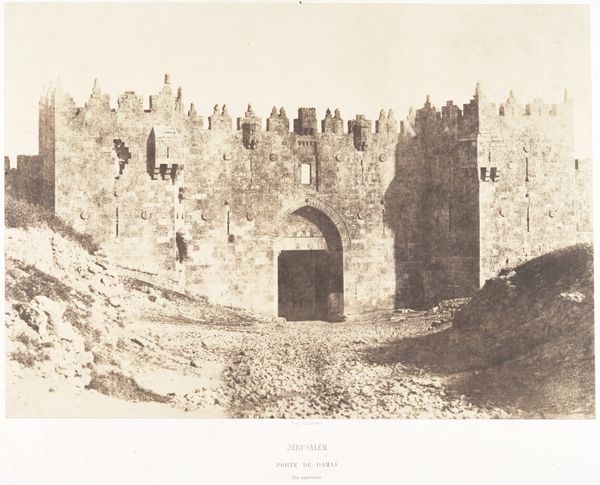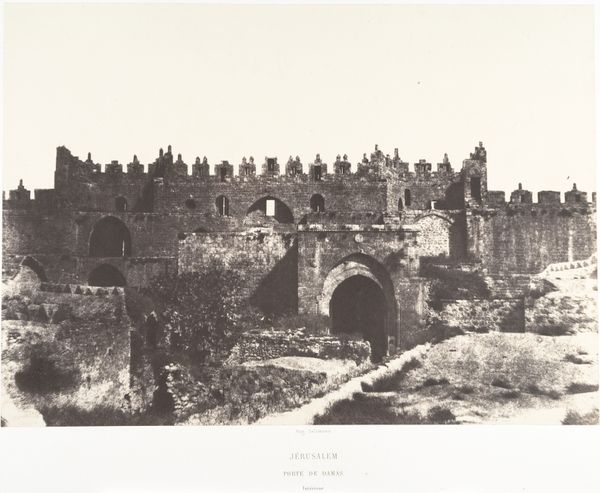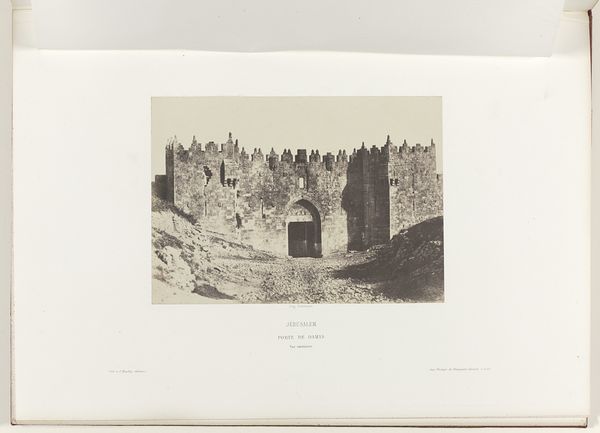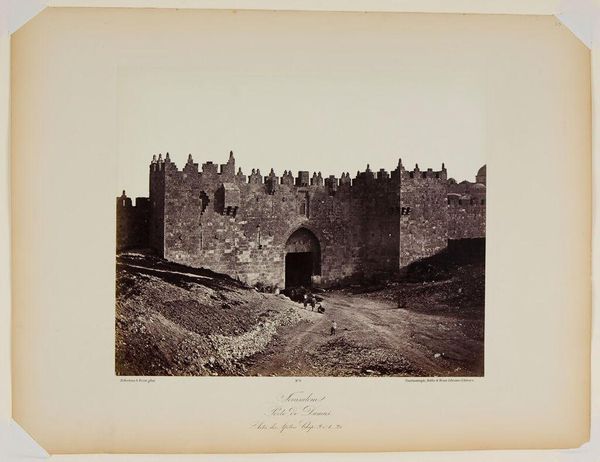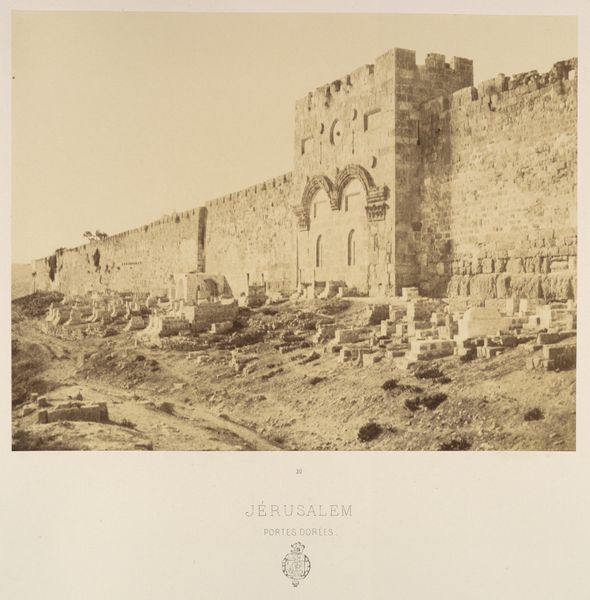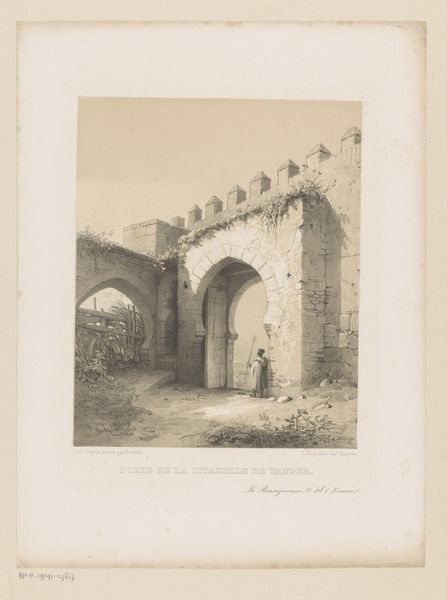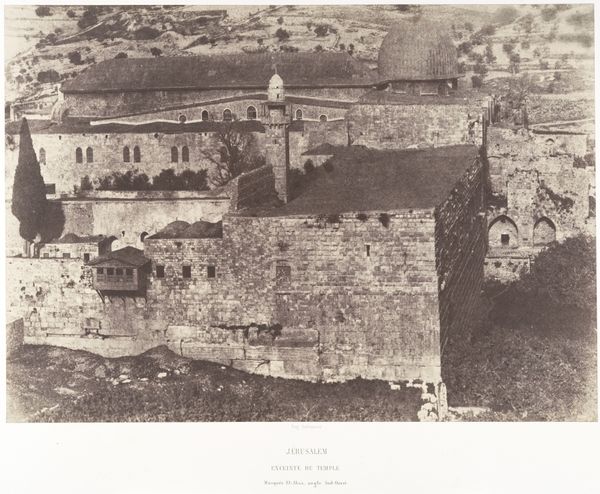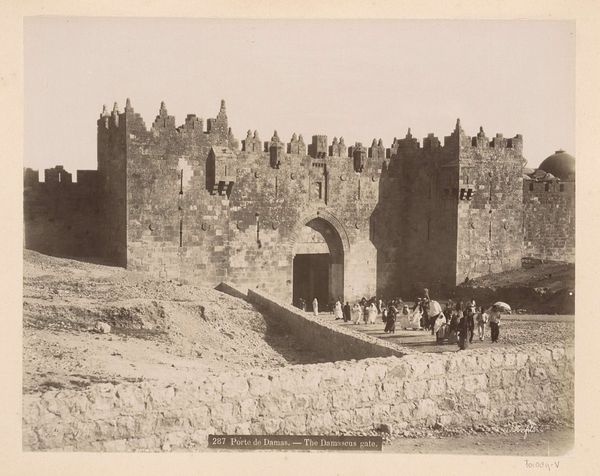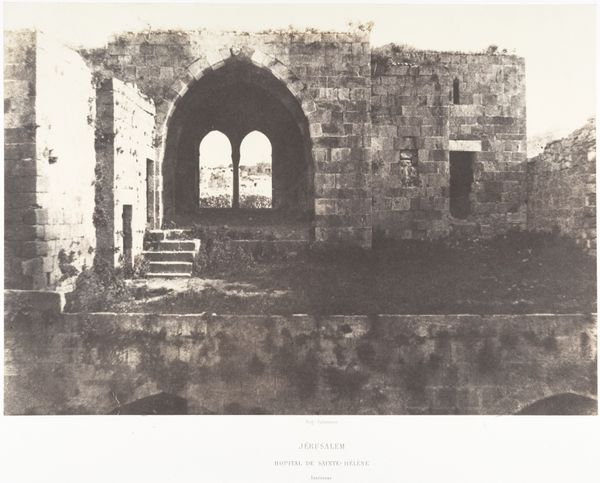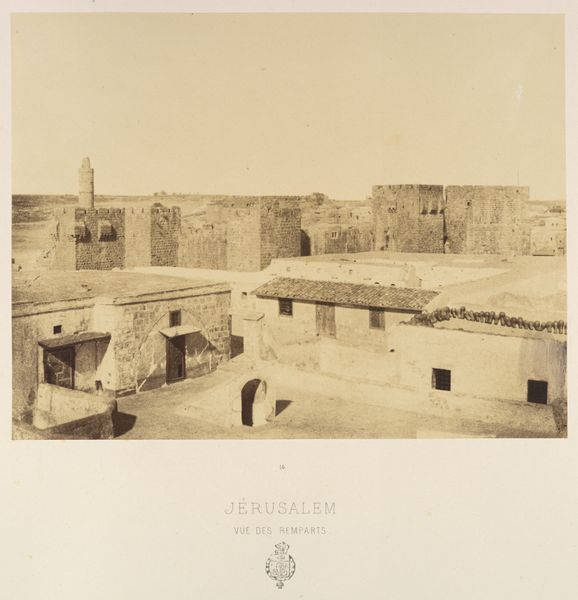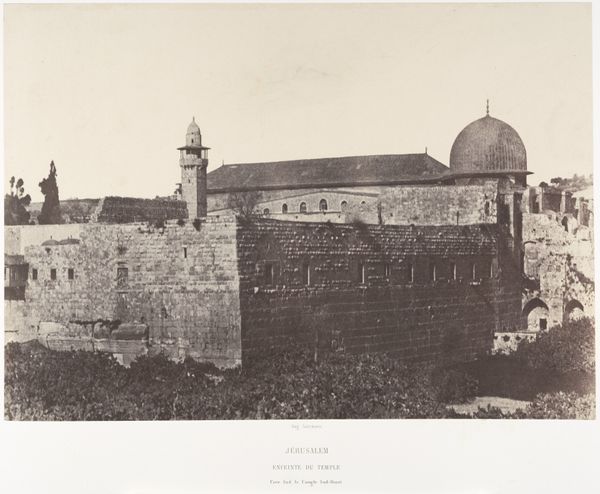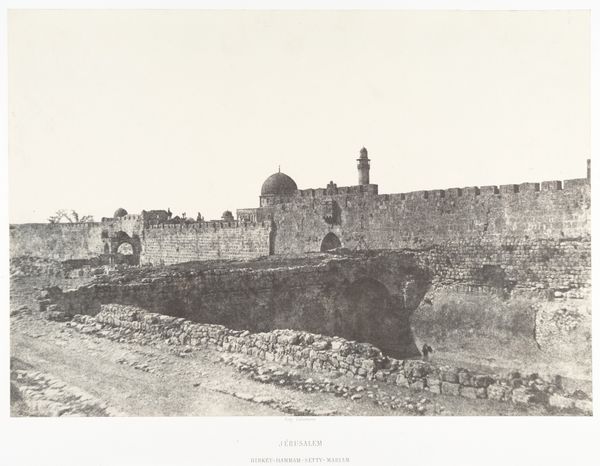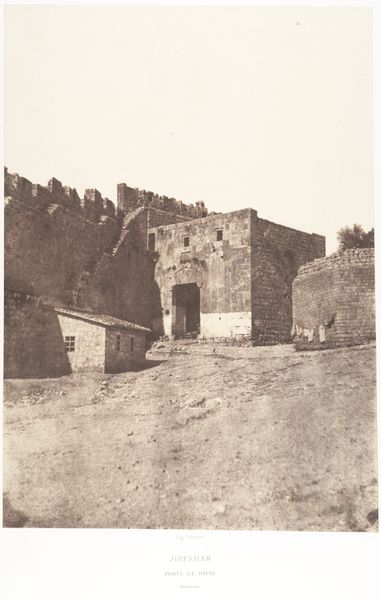
Jérusalem. Porte de Damas ou des colonnes (Bab-el-Ahmoud) 1860
0:00
0:00
photography, gelatin-silver-print, architecture
#
landscape
#
photography
#
ancient-mediterranean
#
orientalism
#
gelatin-silver-print
#
cityscape
#
islamic-art
#
architecture
Dimensions: Image: 8 7/16 × 11 1/8 in. (21.4 × 28.2 cm) Mount: 17 15/16 × 23 1/4 in. (45.5 × 59 cm)
Copyright: Public Domain
Curator: Louis de Clercq captured this image, entitled "Jérusalem. Porte de Damas ou des colonnes (Bab-el-Ahmoud)," in 1860. The gelatin-silver print presents us with a rather stark cityscape. What are your initial thoughts? Editor: Immediately, I’m struck by the sheer density of the stone. The materiality of the gate and walls—that rough, weathered texture—it speaks of an immense human effort of quarrying and construction. It makes you think about labor, time, and what it takes to build such a structure. Curator: Precisely. The photograph’s composition emphasizes the gate’s monumentality, focusing on its geometric arrangement and architectural features. Observe the rhythmic repetition of the crenellations, each casting subtle shadows that give depth to the flat surface. Editor: Right, and thinking about the medium itself—photography in 1860—the process was so materially different than it is today. Each print involved painstakingly preparing glass plates, mixing chemicals, exposing and developing. Each image became a testament to the photographer's skill and patience. This object we're viewing has traces of those processes. Curator: And consider the symbolic weight of this gate. It’s not merely an entrance; it’s a symbolic threshold, mediating between the city's interior and the outside world. Note the calculated use of light and shadow. It enhances the geometric forms, highlighting their significance. Editor: Yes, it reminds us that even in representing these historical monuments, the labor is part of a colonial encounter. Clercq, as a European photographer, approached Jerusalem and its gates within a specific set of political and cultural dynamics. How do the tools of representation—the camera, the photographic process—reflect that encounter? Curator: Excellent point. The Orientalist style is evident not only in the subject matter, but also in how the scene is carefully framed to evoke a sense of timelessness and exoticism, transforming the reality of Jerusalem into a distant, idealized vision for a Western audience. Editor: By emphasizing the materiality and context, we're really acknowledging that art is not created in a vacuum. Photography, as an indexical medium, carries with it a lot of traces of this encounter between photographer and subject. It becomes about recognizing both what's in the frame, and what exists outside of it. Curator: Indeed, contemplating De Clercq’s photograph allows us to examine how visual form intersects with cultural narrative. Editor: And it challenges us to look at these beautiful objects, also with critical consciousness and understanding of historical context and labor.
Comments
No comments
Be the first to comment and join the conversation on the ultimate creative platform.
